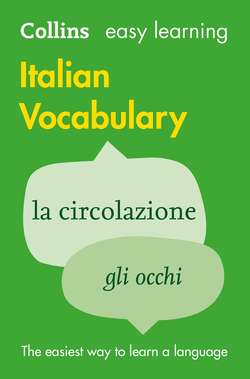Читать книгу Easy Learning Italian Vocabulary - Collins Dictionaries - Страница 7
Оглавлениеgender and plural
GENDER
In Italian, nouns are either masculine or feminine. Most masculine nouns take the article il. This article becomes l’ when the noun begins with a vowel and becomes lo when the noun begins with s+consonant (eg sc, sp, st), or begins gn, pn, ps, x, y or z.
Feminine nouns take la or l’ (when the noun begins with a vowel).
Many masculine nouns end in o; many feminine nouns end in a. Both masculine and feminine nouns can end in e.
PLURAL
Unlike English, where you generally add letters (s or es) to make nouns plural, in Italian you change the final letter.
o > i (il posto > i posti)
a > e (la pizza > le pizze)
e > i (il padre, la madre > i padri, le madri)
Articles change as follows:
| masculine: | il > i | l’ > gli | lo > gli |
| feminine: | la > le | l’ > le |
Nouns that are imported into Italian (such as bar, computer, menù, sport) stay the same in the plural (pl inv). They are generally masculine:
il bar > i bar, il computer > i computer, il menù > i menù, lo sport > gli sport.
PLURAL SPELLING CHANGES
Most nouns ending -co, -ca, -go and -ga often require an h inserting in the plural to retain the hard ‘kuh’ and ‘guh’ sounds:
il parco > i parchi, la banca > le banche
il lago > i laghi, la targa > le targhe
Where spelling changes occur in the plural we have included the plural ending.
